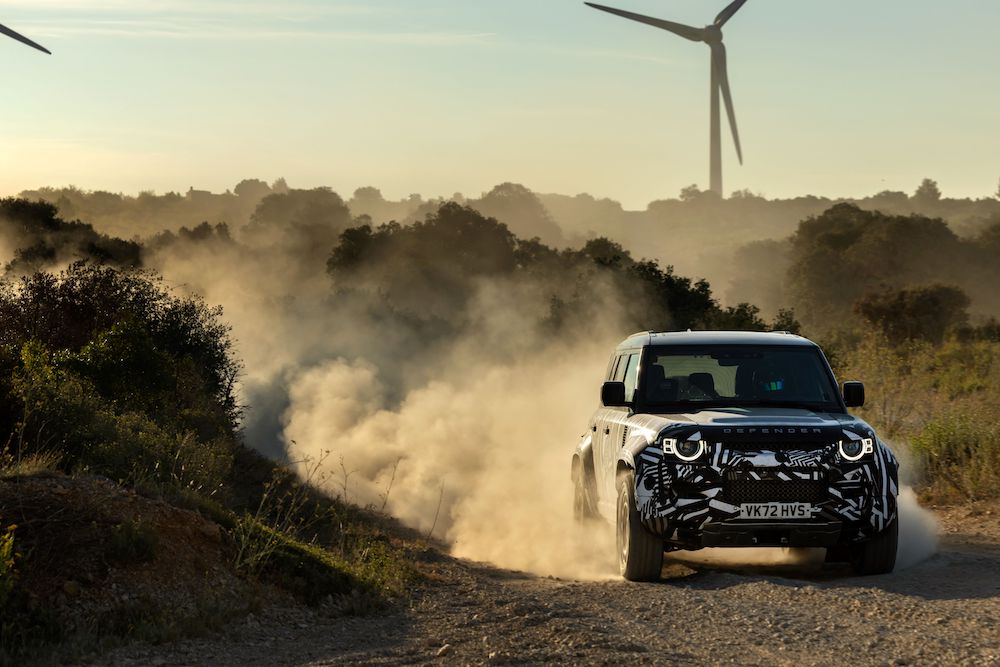Explore Africa Adventures has been leading self-drive safaris for the past eleven years, and has now conducted its eighth East African safari. This month-long tour was led by experienced East African specialist Andre van Vuuren, and the ultimate goal was the teeming plains of the Serengeti. Here are some highlights of the trip
Text: Sue Hermann
Photographs: Andre van Vuuren
We were headed for the Serengeti , where the largest movement of wildlife on earth takes place. Having made our way from Messina through the trials and tribulations of Beit Bridge, across Zimbabwe, through Mozambique (with a stopover at Cahora Bassa), and into Malawi we relaxed for two nights at Chitimba Beach.
Here we camped on the white shores of Lake Malawi, swam, enjoyed ice-cold Kuche Kuches, and prepared our kit and vehicles. A day trip along a 4×4 route led us to the historic Livingstonia Mission and the University of Livingstonia, and we enjoyed the most fantastic views of Lake Malawi.
But the focus of our trip was Tanzania, and there we kicked off with a few memorable days on Zanzibar Island. Leaving our vehicles parked in the care of the security contingent at the Royal Palm Hotel in Dar es Salaam, and our freezers plugged into the hotel’s power supply, we caught an early morning flight to the island.
After a smooth landing in Stone Town our group of now good friends had lunch at the famous Mercury’s restaurant, named after Freddie Mercury – who was born on the island. A night at Africa House, with views of dhows on the crystal waters of the Indian Ocean, gave us the opportunity to explore Stone Town, which Andre knows like the back of his hand.
The archipelago of Zanzibar is made up of two major islands, Pemba and Zanzibar (Unguja in Kiswahili), as well as about 50 islets. Apart from the attractions of the white sands and azure waters, cultural drawcards in Stone Town, such as the old slave market, the Palace Museum, the Old Fort and the House of Wonders with its intricate lattice woodcarving, are all well worth visiting.
After our night in Stone Town we travelled to Nungwi Village on the northern tip of the island. Here we spent three nights in the luxurious Amaan Bungalows that stand on stilts in the shallows.
Something not to be missed on the island is a visit to a spice farm, such as that of Mr Batafly (Khamimakame Pandu), who is renowned for his breathtaking coconut palm-climbing and harvesting demonstration.
Another must-do is a dhow trip. Andre arranged with old friend Alibaba (and his 40 thieves?) for us to go to Mnemba Island, and what a fantastic day we had! Snorkelling from the traditional wooden dhow, a kaleidoscope of corals and topical fish surrounded us, and not even 74-year-old Oom Johan Cilliers could resist it. A seafood braai on the beach of kingfish and barracuda, with fresh fruit, rice and chipatis, topped off a memorable experience.
From Zanzibar we returned to Dar, and were reunited with our vehicles, ready to carry on to our next destination – Ngorongoro Crater. After a few nights on the road, and a scenic drive along the shores of Lake Manyara, we arrived at Karatu, just outside of the Ngorongoro Conservation Area. Here we stayed at the Bougainvillea Lodge where we enjoyed amazing food, and took a day trip into the crater.
Ngorongoro Crater is the focal point of the much larger Ngorongoro Conservation Area, and is the world’s largest intact caldera (an area formed by the collapse of land following a volcanic eruption). It forms a spectacular bowl of about 265 sq km with sides of up to 600m deep.
At any one time there are an estimated 20 000 to 30 000 animals in the crater, while during the migration millions of wildebeest, zebra, and antelope pass through the conservation area. It is also believed that the crater is home to the world’s highest density of predators.
From Karatu and the Ngorongoro Crater we travelled further north to the Serengeti National Park, entering the Naabi Hill Gate and traversing the absolutely terrible road to Seronera, where we spent the night at Tumbile Camp.
The road to Seronera might be torture for your vehicle, but it does have its attractions. On a scenic game drive along the winding Seronera River, we were lucky enough to see a leopard pulling a fresh impala carcass up a yellow-barked fever tree, four lionesses hiding their cubs in between the rocks of the Masai koppies and a huge herd of buffalo in a riverbed.
From these early sightings it was evident that Andre knew the Serengeti extremely well, and we were convinced we were in for an unforgettable time. This was the second Explore Africa Wildebeest Migration Safari to the Serengeti in nine weeks, so Andre had a good idea of where to find the game.
The next morning Andre made the decision to head straight for the ranger post on the Mara River, and this is where we struck gold. Thousands of wildebeest had gathered on the banks, and we were lucky enough to watch them cross the river.
That night, instead of heading back to Lobo, Andre asked the rangers for permission to camp on the banks of the Mara, which they granted after some negotiation. We camped in the midst of the herds, with their bellowing and the sound of the Mara’s rapids lulling us to sleep. This was definitely one of the highlights of an already unforgettable trip.
When our time on the Serengeti was over we headed south for home. On the way we were fortunate to have a perfectly clear view of Mount Kilimanjaro basking in the equatorial sunshine – an idyllic sight to mark the pinnacle of our safari.
Running the croc gauntlet
Every year one and a half million wildebeest and half a million zebra and antelope move north from the Serengeti to the adjoining Masai Mara reserve in Kenya, following the rain and grazing.
This annual migration is one the great wonders of the natural world. Vast herds of the clown-like wildebeest spend the rainy season in the open volcanic plains below the Ngorongoro Crater, and in the southern Serengeti where the grass is greenest.
Then, when the grass is depleted, the herds make their way north, venturing into the plains and woodlands of the Serengeti’s western corridor.
Here the wildebeest are confronted by the Grumeti River, where Nile crocodiles of up to six metres in length lie in wait. The herds have to drink from the river, and cross it, and it is then that the crocodiles take their toll.
Once across the Grumeti the wildebeest continue north, following the rainfall across the Kenyan border and into the Masai Mara. Again they must cross a river, this time the Mara, where more crocodiles prey on them.
The bountiful grasslands of the Mara support the vast herds until October or November, at a time when the rest of the ecosystem is too dry to sustain them. And then, as the storm clouds gather in the south, the wildebeest begin the trek back to their breeding grounds which, by the time they get there, are again green and lush.
The wildebeest have been making this journey for so long that they have evolved to survive it. Synchronised birthing means that 90% of the calves are born within a three-week period at a rate of up to 8000 a day.
Predators simply can’t cope with the sudden surge in easy pickings, and don’t make a dent in the population. Within minutes of being born the calves can run, and just three days later they are strong enough to keep up with the adults. Despite these adaptations there is a high mortality rate within the herd, often from fatigue and injury, so thousands of vultures follow its movements.







